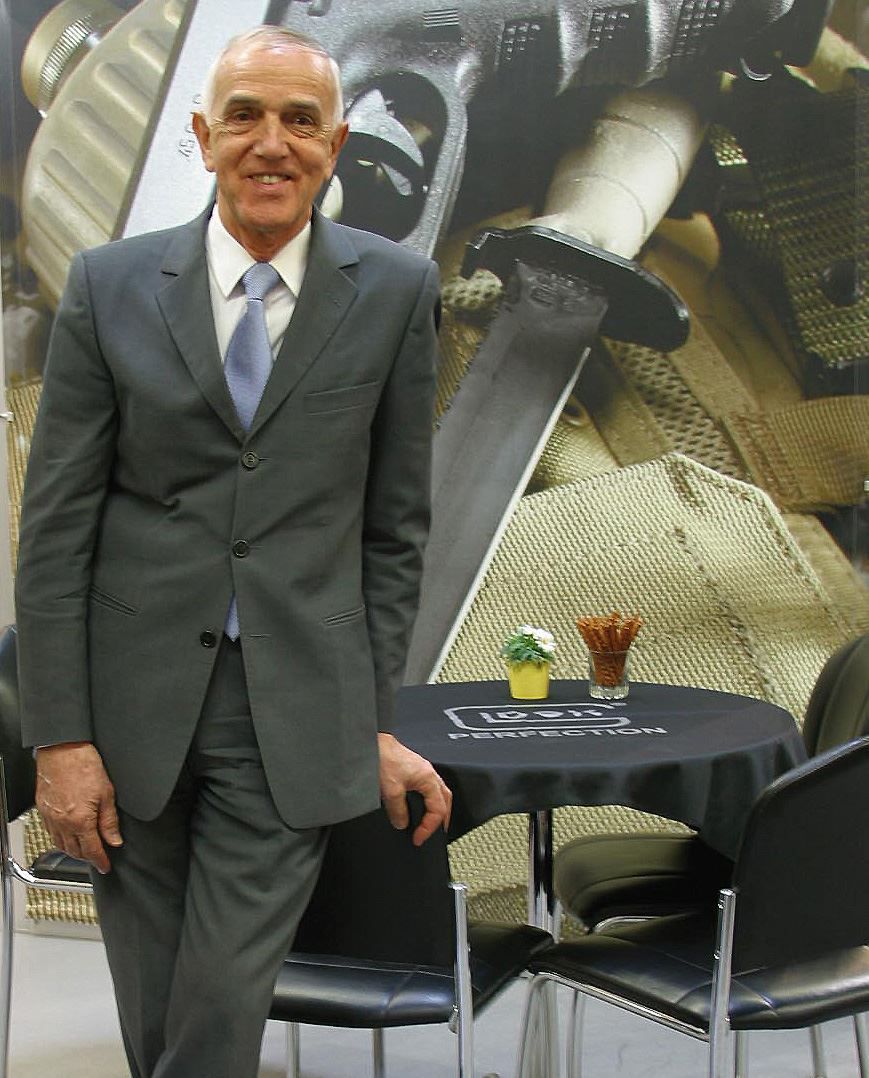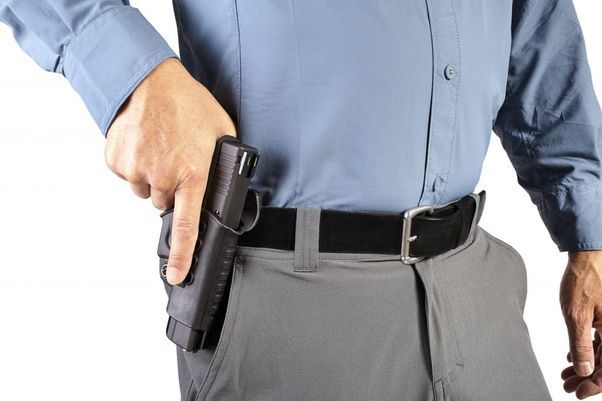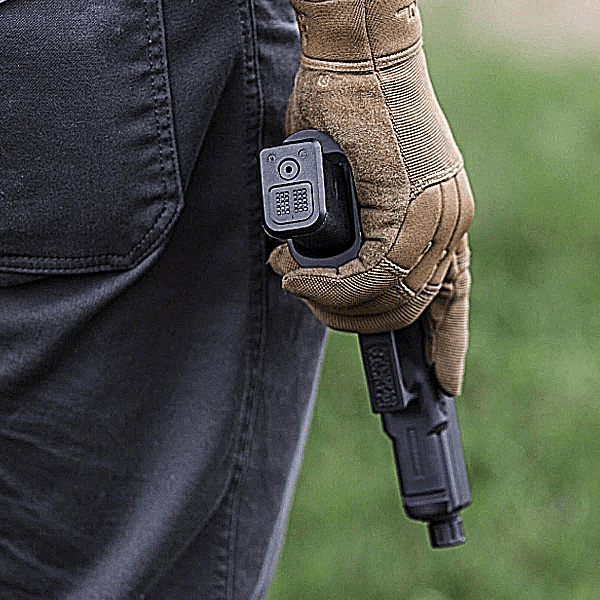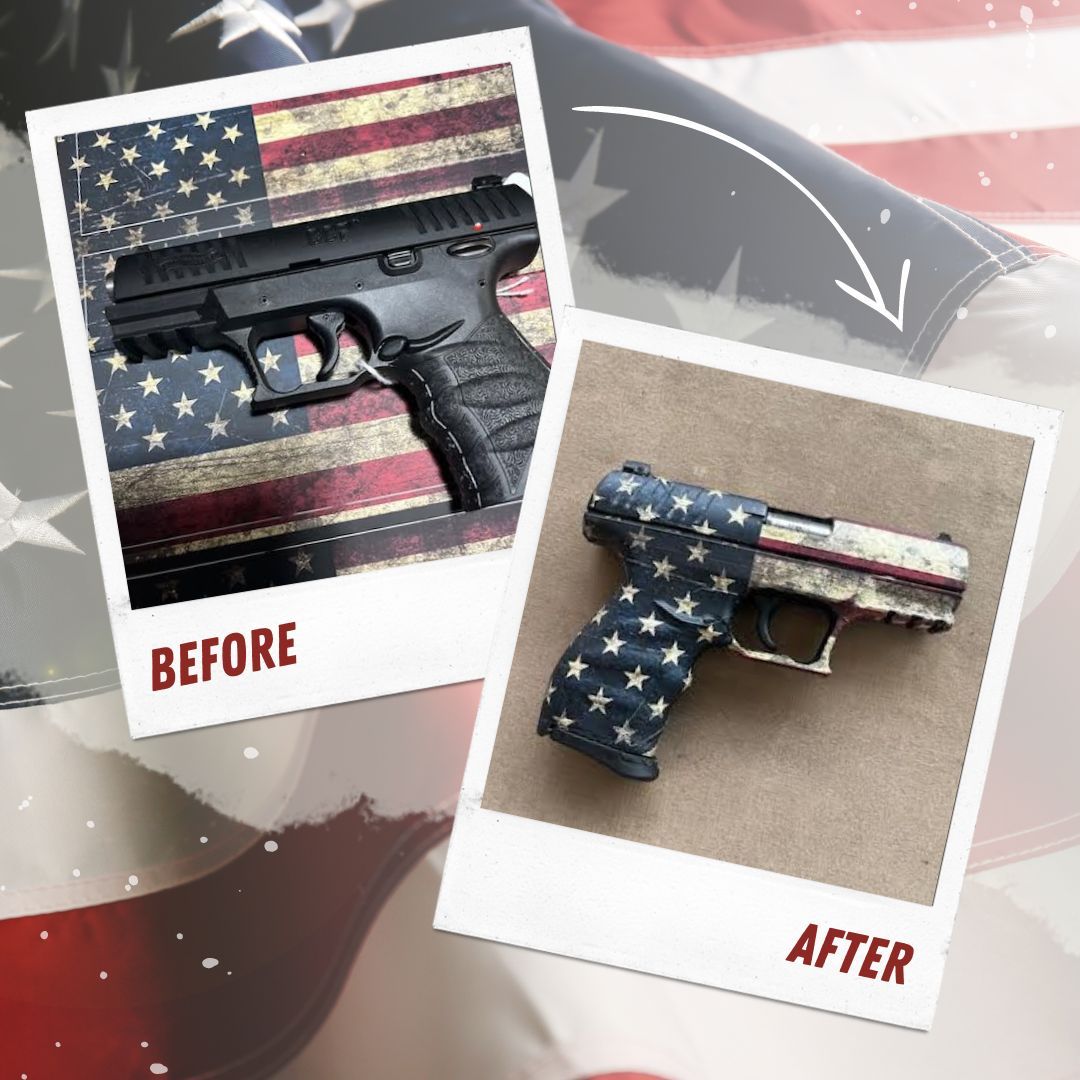Gregory Kielma • May 26, 2024
How flawed are America's gun laws?

How Flawed are America's Gun laws?
Gregg Kielma Firearms Instructor- FFL- Gunsmith
Bill Caffery
Seriously flawed.
Most American gun laws are geared towards the point-of-sale through legal, licensed gun dealers, also called Federal Firearms Licensees (FFLs). That is, when you purchase a firearm from a licensed dealer, you must fill out and sign a form, provide ID, and wait while they run a “background check” on you. That can take seconds, or it might take up to 3 days. Some states include “waiting periods” of up to 10 days before you can take possession of the firearm you’re holding in your hands.
All the paperwork done by the FFL dealer has to be kept by the dealer. Any small error on the forms can cause the dealer headaches with the authorities. A transposed serial number or the wrong model number can result in federal prosecution.
Some cities, and even a few states, require you to obtain a permit each time you want to purchase a firearm. In some cases, processing that permit may take months, even more than a year. Once you get that nice permit in hand, you can buy the gun. But then you need to have a different permit to keep it in your home in the city and the long process starts all over again. This is a serious infringement on the right to own a firearm.
While some of this may sound “natural” to people in other countries, the problem with this is that less than 1%-2% of gun purchases at gun dealers are made by people with criminal records. Criminals don’t obtain their firearms from gun dealers, gun shows, or pawn shops.
Illegal Sales
Most criminal acquisitions of firearms are black market sales or trades. Danny Dirtbag wants a gun so he might offer Rotten Richie a quantity of drugs for one he has. Or Rotten Richie “knows a guy” who will sell him a gun, which he will then give/sell to Danny.
Where do those guns come from? Most are taken in burglaries. Burglaries of homes, of sporting goods stores, gun shops, etc. Those are sold to a “fence” who gives the thief some money for the gun and the thief often buys drugs with the money. Other times, gang members get jobs with shipping companies that ship guns from distributors to retailers and they make a box “disappear” in-transit. Those guns end up on the black market.
Many years ago, someone documented how long it took for a criminal to obtain a firearm. A criminal could obtain an illegal firearm in as little as 30 minutes with cash. No questions asked. Out of 5 attempts, the longest it took was 29 hours. This was at a time when there was a 5-day “waiting period” on most handgun sales. So, the desperate citizen who wanted a gun had to wait 5 days, while the criminal he feared could obtain one before the sun rose the next day.
So, the existing gun laws have created an underground world of gun sales that offer easy availability and are “off the record.” A gun from these illegal sales is essentially untraceable to the person who possesses it or left it at a crime scene. Police can trace the legal sales from manufacturer to distributor to the retailer to the first purchaser of the firearm. If that firearm was reported lost or stolen police only know who the last legal owner was, not who used it in a crime.
Prohibited Persons
The laws list several disqualifying characteristics for purchasing or possessing a firearm. These include people convicted of felonies or certain misdemeanor crimes, fugitives from justice, people in the country illegally, those dishonorably discharged from the military, users of controlled substances (drugs), those with restraining orders against them and people a court has found to be mentally unfit or insane.
Yet, a study in the City of Pittsburgh showed that 80% of people illegally carrying guns were prohibited from possessing guns.
The laws don’t seem to be working very well.
Bargaining Chips
Part of the problem is when Danny Dirtbag, with a criminal record of theft, robbery and burglary, is caught with a gun, he may not go to jail for it. If he’s charged with other crimes — like robbery using the gun — his lawyer will offer a guilty plea to some lower offense like “aggravated assault” if the prosecutor will dismiss the felon in possession charge. There’s method in the madness here. A state charge for possession may not be quite as harsh as the Federal charge (up to 10 years in prison), but it will certainly add several years to the robbery charge. By pleading to a lesser charge, it disposes of the case faster and Mr. Dirtbag is locked up for a year or two, instead of maybe 8–10 years.
The result is many criminals don’t fear many of the gun laws because lawyers will play Let’s Make A Deal with prosecutors.
A few “pilot” programs have been run in different parts of the country where felons are prosecuted in a federal court for possession and plea bargains aren’t on the table. The results were encouraging. Violent crime was significantly reduced in those communities during the program. However, problems arose when lawyers alleged the programs were “racist” and impacted poor minority communities, where most of the violent crimes occurred, the most.
On The Other Hand
In some states certain rifles are restricted based on certain features of the rifle, not how powerful or deadly they are. One version of a rifle can be legal while a different version of the same rifle is a felony to own. The graphic below illustrates how easily one can violate the law.
If an unaware gun owner purchases either of the legal rifles shown above in certain states and adds a device to the end of the barrel (e.g. a “flash hider” or muzzle brake) it becomes an illegal rifle. Such a device doesn’t change a thing about how the rifle functions or operates, doesn’t make it “more powerful” or more accurate. But it does make it a felony to have.
But what happens when someone is caught with one of these rifles? Let’s look at the difference between Danny Dirtbag and John Q. Citizen.
Danny Dirtbag gets a hold of the illegal rifle via illegal sales and uses it to hurt someone in a robbery or other crime. His lawyer plays Let’s Make A Deal so that Danny pleads guilty to “robbery” or even “armed robbery” if the prosecutor drops the “assault weapon” charge, the felon in possession charge and the possession of a stolen firearm charge. It’s easy for the prosecutor to dismiss those charges to get a fast conviction and Mr. Dirtbag is off to the State-run Graybar hotel for a 3-year stay.
But John Q. Citizen has a different problem. Two men kicked in his front door and threatened his family, but he used his legally purchased, but modified rifle, to wound both criminals who terrorized his wife and daughters. Police investigate and determine the shooting was justifiable self-defense of his family. But they confiscate his “illegal” gun. The prosecutor decides to prosecute, and Mr. Citizen is looking at up to 10 years in prison, all because of a cosmetic feature of his rifle. His choice is to spend tens of thousands of dollars on a lawyer to stay out of jail or try to work on a deal that doesn’t involve jail time or bankruptcy-inducing fines. He may also lose his house, his wife, and his job or his entire career in the process. He will certainly lose his $800 rifle regardless. The bad news is the prosecutor doesn’t have to deal with it here. He can “make an example” out of Mr. Citizen and press for a trial and the maximum sentence.
What’s Missing?
Since certain people are the ones who the law says should not have firearms, one simple method could cut down on a lot of the nonsense everyone has to put up with when purchasing a gun. That is to provide an ID to the prohibited persons that has a distinguishing color — say red. A red ID card will stop them from buying a gun anywhere from any legal seller. And if caught with a gun and a red ID card, it’s an easy arrest for the police. For the prosecutor, it’s an easy conviction because we make that crime non-negotiable.
Some will claim the red ID card will “stigmatize” the person and make it harder to get a job or do other business. Well, it should. There should be serious consequences for serious crimes.
But we can also offer a “way out” of that problem. If the person rehabilitates their life and stays out of trouble for a period (5 years? 8 or 10 years?) they get their rights back and get a standard ID card (notwithstanding certain exceptions).
There are many more flaws I could write about, but I’ve written enough, and dinner is now ready.

14 Handguns That Go the Distance: Proven Accuracy After 10,000 rounds. Let's Take A LOOK: 1. Glock 19: The Benchmark of Consistent Performance**The Glock 19 stands as an undisputed icon in the world of handguns, a name synonymous with unwavering reliability and widespread respect. Its compact design is a key contributor to its versatility, making it a favored choice among both law enforcement agencies and civilian users for a multitude of applications. The reputation of the Glock 19 isn't merely anecdotal; it's meticulously built on a foundation of consistent operational performance and an inherent ease of use that appeals to a broad spectrum of shooters. This handgun strikes a remarkable balance in its physical attributes. While slightly smaller than its full-sized counterpart, the Glock 17, its compact form factor offers enhanced manageability for various users without compromising its functional capabilities. The design ensures a comfortable grip, promoting better control and accuracy during firing, alongside an ample magazine capacity that meets the demands of diverse situations. Durability is another cornerstone of the Glock 19’s appeal, contributing significantly to its longevity and sustained accuracy. Crafted from high-quality materials, its robust construction is engineered to withstand rigorous use over extended periods, making it a reliable partner for many years. Furthermore, the simplicity of its design translates into generally easy and straightforward maintenance, a practical advantage that is highly appreciated by both seasoned gun owners and those new to firearms. When it comes to sheer performance, the Glock 19 is a standout, offering flawless functionality every single time you pull the trigger. It's incredibly rare for this model to have any mechanical problems, which is a major reason why so many people trust it. Whether for self-defense or professional use, the Glock 19 has consistently proven itself to be a dependable and accurate choice, even after firing a significant number of rounds. 2. Sig Sauer P365 : Micro-Compact Reliability with Impressive Capacity**The Sig Sauer P365 has rapidly ascended to prominence, celebrated for its ingenious blend of compact sizing and formidable reliability. It effortlessly defines the micro-compact pistol category, making it an exceptionally popular selection for individuals prioritizing concealed carry without sacrificing performance. The thoughtful design of the P365 meticulously balances user comfort with operational excellence, a combination that truly sets it apart. One of the most remarkable attributes of the P365 is its magazine capacity, boasting 10+1 rounds, which is truly outstanding for a firearm of its diminutive stature. This generous capacity provides users with a significant advantage, often surpassing that of many similarly sized pistols on the market. Furthermore, its striker-fired action is engineered to deliver consistent trigger timing, ensuring a smooth and predictable shooting experience that enhances accuracy and control. Beyond its capacity, the P365 is designed with adaptability in mind, particularly regarding its grip. The ergonomic grip allows for comfortable handling, even during prolonged shooting sessions, which is crucial for both training and self-defense scenarios. The pistol is also thoughtfully equipped with sights that significantly enhance targeting accuracy, specifically engineered for quick alignment. This feature can be particularly beneficial in high-stress situations, making it a practical and trustworthy option for those seeking a reliable self-defense firearm. Since its introduction, the Sig Sauer P365 has garnered widespread acclaim and strong market reception, solidifying its position as one of America's most popular pistols for concealed carry. Its reputation for unwavering reliability continues to grow, earning the trust of both seasoned shooters and new gun owners alike. This seamless integration of functionality, comfort, and undeniable dependability firmly establishes the Sig Sauer P365 as a premier choice for anyone in pursuit of a high-quality, long-lasting concealed carry option. 3 Glock 43X: The Everyday Carry Champion for Durability**For those who prioritize ease of daily carry without compromising on performance, the Glock 43X stands as a compelling and widely embraced choice. Its compact dimensions and remarkably lightweight frame make it exceptionally easy to carry discreetly throughout the day. Chambered in the ubiquitous 9mm, this pistol not only offers effective stopping power but also manages recoil with impressive efficiency, contributing to a comfortable and controlled shooting experience. The reliable performance of the Glock 43X is a testament to its lineage. Glock’s stellar reputation for crafting dependable firearms is well-earned and this model proudly upholds that stringent standard. Its design emphasizes simplicity and user-friendliness, qualities that resonate deeply with both novice shooters seeking an approachable firearm and experienced enthusiasts who value straightforward functionality. Ergonomics are thoughtfully considered in the Glock 43X’s construction, providing an ergonomic grip that ensures comfortable and secure handling. This firm hold is instrumental in maintaining accuracy during shooting sessions, allowing for greater precision and control. While its standard magazine capacity is 10 rounds, the popularity of this model means that many users frequently explore aftermarket options to further increase their ammunition capacity, tailoring the pistol to their specific needs. Another significant strength of the Glock 43X lies in its extensive customization potential. The market is robust with a wide array of aftermarket parts, offering users the freedom to personalize their pistol to perfectly match their individual preferences and operational requirements. From upgraded sights and enhanced grips to specialized holsters, the options are virtually endless. This robust build, combined with its renowned ease of maintenance, solidifies the Glock 43X as an exceedingly reliable firearm, serving users effectively in a diverse range of scenarios and making it a consistently favored choice for its versatility and trustworthiness. 4. Smith & Wesson M&P Shield: Slim Design, Uncompromised Performance**The Smith & Wesson M&P Shield has become a cornerstone for concealed carry enthusiasts, consistently lauded for its remarkably slim design which facilitates effortless concealability without ever compromising on critical performance. This pistol is frequently praised for its inherent reliability and commendable accuracy, firmly establishing it as a dependable option for anyone seeking a compact firearm that can be trusted when it matters most. Built for lasting use, the M&P Shield boasts a tough polymer frame and a strong stainless steel slide, making it very durable and resistant to wear and tear. Plus, it comes in popular calibers like 9mm, .40 S&W, and .45 ACP, allowing you to pick the one that best suits your needs and preferences for a truly personalized shooting experience. Many users rave about the M&P Shield's trigger, which is adjustable and offers a crisp, consistent pull that really helps improve accuracy and control. The grip is also expertly designed for a secure hold, which is essential for maintaining control, especially during rapid firing or in high-pressure situations. The evolution of the M&P Shield series also includes the Shield Plus model, a significant advancement that boosts magazine capacity through an innovative “stack-and-a-half” design. This clever engineering allows for more rounds to be carried while meticulously preserving the pistol's essential compact profile. This development directly addresses the growing demand for higher capacity in personal defense handguns, ensuring that the Smith & Wesson M&P Shield continues to be a top choice for those seeking a reliable, compact, and high-performing firearm, solidifying its reputation as one of the most trusted names in concealed carry pistols for enduring accuracy. 5. Springfield Armory XD-S: Balancing Slimness with Robust Reliability**For those in pursuit of a reliable single-stack 9mm handgun, the Springfield Armory XD-S presents itself as an exceptionally popular choice. Its defining characteristic is its notably slim profile, which makes it incredibly easy to conceal and carry daily, blending seamlessly into various lifestyles. This model masterfully achieves a delicate balance between inherent reliability and straightforward ease of use, qualities that appeal broadly to both newcomers to the shooting world and seasoned enthusiasts alike. Despite its compact and slender design, the XD-S makes no concessions when it comes to performance. It boasts a robust build quality, featuring a polymer frame that effectively keeps the overall weight down without ever sacrificing crucial durability. This considered construction plays a significant role in its ability to handle recoil efficiently, consequently making the shooting experience more comfortable and controllable for the user, even during extended periods of use. An integral aspect of the XD-S’s design is the inclusion of a grip safety, a fundamental feature that introduces an additional layer of security for the operator. Its intuitive design allows for quick and effortless engagement, a critical attribute in high-stakes self-defense scenarios where rapid response is paramount. Moreover, the pistol provides excellent trigger control, a characteristic that directly contributes to its impressive accuracy and highly efficient handling, allowing shooters to place rounds precisely where intended. Springfield Armory maintains a distinguished reputation for producing firearms of superior quality, and the XD-S is a shining embodiment of this legacy. Its consistent performance across a variety of conditions powerfully reflects a design philosophy intently focused on reliability and user confidence. Owners who carry the XD-S consistently praise its consistent function and the profound sense of confidence it instills when holstered and ready for use, affirming its position as a durable and accurate choice for long-term personal defense. 6. Heckler & Koch VP9: German Engineering for Ergonomics and Precision**The Heckler & Koch VP9 stands out as a paragon of reliability and exquisite craftsmanship, a testament to its German manufacturing heritage. This 9mm pistol incorporates a modern striker-fired mechanism and a durable polymer frame, making it a sophisticated and highly desirable choice for discerning firearm enthusiasts. Its design philosophy clearly prioritizes both performance and user experience, setting it apart in a competitive market. One of the most innovative and highly appreciated features of the VP9 is its modular grip system, which includes interchangeable backstraps and side panels. This ingenious design allows users to meticulously customize the grip to perfectly fit a diverse range of hand sizes, ensuring unparalleled comfort and control for virtually any shooter. This level of adaptability not only enhances the shooting experience but also makes the pistol accessible to a wider demographic of users. For those accustomed to European firearm designs, the VP9 offers a familiar European-style paddle magazine release, a feature commonly found in other German and European pistols. This provides a natural and intuitive feel for users familiar with such configurations. However, recognizing diverse preferences, an alternative model, the VP9-B, is also available, which features a more conventional push-button magazine release, catering to those who prefer the American style of operation. The VP9 has garnered significant praise for its exceptional accuracy and superior build quality, which are hallmarks of Heckler & Koch engineering. It consistently achieves high scores in reliability assessments, making it an incredibly popular choice among individuals who prioritize unwavering performance and precision. Furthermore, its expertly designed ergonomics contribute profoundly to a remarkably comfortable and stable shooting experience, even during extended range sessions or demanding operational use. This combination of flexibility, precision, and inherent durability firmly establishes the VP9 as a strong contender and a highly respected name in the market for reliable, long-lasting handguns. 7. Ruger Security-9: Accessible Reliability for Versatile Use**The Ruger Security-9 holds a respected position in the handgun market, recognized for its compelling combination of reliability and impressive affordability. It is meticulously designed to serve effectively in dual roles: both for personal defense and as a practical option for concealed carry. With dimensions comparable to the widely popular Glock 19, the Security-9 emerges as a highly suitable choice for a broad spectrum of users seeking a versatile and dependable firearm without an exorbitant price tag. Crafted from lightweight, yet durable materials, the Security-9 is engineered to be comfortable for extended periods of carry, making it a practical choice for daily personal protection. It comes equipped with basic, yet highly effective sights, ensuring clear target acquisition for most scenarios. Furthermore, each Security-9 typically ships with two 15-round magazines, providing ample capacity right out of the box, which is a significant value addition for its price point. The design incorporates a large, efficient extractor, which is crucial for ensuring smooth and consistent operation, minimizing potential malfunctions. This handgun has earned a solid reputation for its straightforward ease of use and simple maintenance requirements, characteristics that are particularly appealing to both burgeoning new shooters and seasoned gun owners alike. Ruger further enhances its user-centric design by offering choices between models with manual and non-manual safety mechanisms, allowing individuals to select a configuration based on their personal preference and comfort level. This thoughtful adaptability makes it a perennially popular choice among handgun owners seeking a reliable workhorse. Ruger's commitment to delivering quality firearms at an accessible price is clearly evident in the Security-9. Its consistent performance, robust construction, and user-friendly features make it an excellent entry into the category of reliable handguns, proving that dependable accuracy and longevity don't necessarily require breaking the bank. It represents a smart investment for those prioritizing functionality and sustained accuracy over thousands of rounds, affirming its place as a trustworthy companion for various shooting needs. Continuing our journey into the world of dependable firearms, we now delve into another impressive selection of handguns that exemplify exceptional durability, advanced ergonomics, and sustained accuracy. These models represent industry benchmarks, proving their mettle through extensive use and maintaining their performance integrity even after thousands of discharges. Our analysis highlights their specific features and the meticulous engineering that makes them stand out for long-term reliability and user confidence. 8. Taurus G2C: Accessible Reliability for the Everyday Carrier**The Taurus G2C has carved out a significant niche in the handgun market as a remarkably reliable and budget-friendly option. Its compact design instantly makes it an attractive choice for concealed carry, providing a blend of discretion and dependable performance that has garnered widespread praise. This 9mm pistol effectively shatters the perception that quality and affordability cannot coexist, offering an accessible entry point for new and experienced shooters alike. A standout feature of the Taurus G2C is its impressive 12+1 round capacity, which is quite remarkable for a handgun of its compact size, offering a significant advantage for personal defense. Taurus has also thoughtfully improved the grip on the G2C, making it more comfortable and controllable than previous models, which enhances the shooting experience during longer sessions. The Taurus G2C's durability is a result of its solid construction, featuring a sturdy polymer frame and a reliable stainless steel slide that work together to ensure it lasts and can handle consistent use. Building on the success of the Millennium series, the G2C strikes a great balance between performance, ease of use, and an attractive price point. While some users might note its characteristically long trigger pull, many find it to be a perfectly suitable and effective choice for personal defense scenarios. Priced typically around $200, the Taurus G2C consistently ranks as a top pick for individuals seeking a high-quality, reliable handgun without having to compromise their budget. Its blend of features and unwavering reliability makes it a smart investment for diverse shooting needs. 9. Sig Sauer P320: Modular Versatility Meets Unwavering Reliability**The Sig Sauer P320 stands as a testament to innovation and enduring reliability, highly favored for its groundbreaking modular design. This inherent versatility allows users to effortlessly change calibers and adjust sizes, transforming the pistol to suit a myriad of needs, from stringent personal defense requirements to demanding professional applications. This adaptability is a cornerstone of its widespread appeal. A core element of its design is the unique chassis-based system, which enables the serialized fire control group to be readily transferred between different frames. This feature significantly enhances both the adaptability and convenience for users, offering unprecedented customization. Beyond its modularity, the P320 is universally praised for its meticulously engineered ergonomic grip, which ensures exceptional comfort and control during both handling and firing. Its proven track record is underscored by its extensive adoption by numerous law enforcement agencies, a powerful endorsement that reinforces its reputation as a highly dependable and exceptionally effective firearm in critical situations. The P320 also integrates a suite of advanced safety features, including a robust striker safety and a disconnect safety, guaranteeing secure and responsible handling for all users. Available in a range of sizes—from full-size and compact to subcompact—the P320 caters to diverse preferences and operational demands. While its magazine capacity varies by model, it consistently offers a sufficient number of rounds to meet the requirements of most scenarios, ensuring readiness when it matters most. The pistol’s trigger system is frequently highlighted for its remarkably smooth pull, a characteristic that directly contributes to its impressive accuracy. This feature is particularly beneficial for both novice shooters developing their skills and seasoned users seeking precise shot placement. The overall construction of the P320 exemplifies Sig Sauer's distinguished reputation for superior quality and an unwavering attention to crucial detail, solidifying its status as a paragon of modern handgun engineering. 10. Canik TP9SF: Value-Driven Performance for Discerning Shooters**The Canik TP9SF has rapidly gained widespread acclaim among handgun enthusiasts, celebrated for its remarkable ability to strike an exceptional balance between affordability and unwavering reliability. This semi-automatic pistol distinguishes itself by incorporating an array of advanced features typically found in much more expensive models, making it an incredibly appealing choice for both beginner and experienced shooters seeking outstanding value. Central to the TP9SF's appeal is its robust and sturdy construction. It boasts a durable polymer frame, meticulously engineered for resilience, complemented by a high-quality finish that withstands the rigors of consistent use. This robust build makes it highly suitable for a diverse range of applications, including self-defense, competitive shooting, and regular range sessions, performing reliably across various conditions. A key highlight that consistently receives praise is the Canik TP9SF's exceptional trigger. It offers a smooth, crisp pull that significantly enhances accuracy during shooting, providing a satisfying and predictable experience. Many shooters are particularly impressed by this feature, especially considering the pistol's accessible price point, which truly sets it apart from its competitors. The pistol is also thoughtfully equipped with quality sight options, ensuring clear target acquisition right out of the box. Furthermore, it boasts compatibility with a wide array of aftermarket sights, offering users the flexibility to customize their firearm for improved precision and personalized preferences. This inherent adaptability is a major advantage for those who enjoy tailoring their firearms to perfectly match their individual shooting style and requirements. With its compelling combination of a budget-friendly price and consistently dependable performance, the Canik TP9SF has rightfully earned its esteemed position in many gun collections. Its ability to deliver high-quality features at an accessible cost firmly establishes it as a formidable contender in the highly competitive handgun market, promising reliable service and sustained accuracy for its owners. 11. The Springfield Armory Hellcat: has rapidly become a top pick for those seeking a handgun that's both compact and incredibly capable. It's designed specifically for concealed carry, packing impressive firepower into a small frame. The standard magazine holds 11 rounds, with an option for 13, making it a seriously formidable option for its size and setting a new standard for micro-compact firearms. A defining characteristic of the Hellcat is its intrinsic reliability. Users consistently commend its unwavering performance, even when subjected to diverse and challenging conditions. This consistent dependability has cemented its status as a favored firearm among those who demand absolute trustworthiness from their personal defense weapon, providing peace of mind when it truly counts. Adding to the Hellcat's widespread appeal is its thoughtfully engineered ergonomic design. It nestles comfortably and securely in the hand, facilitating effortless handling and control during critical moments. The grip texture is meticulously designed to provide an optimal level of purchase, ensuring a firm hold without ever feeling overly aggressive or abrasive against the skin. Another significant selling point that enhances its practicality is its innovative sight system. The Hellcat comes standard with a U-Dot sight, ingeniously designed to facilitate rapid target acquisition. This feature is immensely beneficial for shooters of all experience levels, from beginners developing their aiming skills to seasoned professionals needing quick, decisive responses in dynamic environments. Springfield Armory’s unwavering attention to crucial detail and their commitment to superior build quality are vividly showcased in the Hellcat. Crafted with an emphasis on robust durability, it stands as an enduring choice for everyday carry. The Hellcat masterfully combines cutting-edge innovation with practical, real-world functionality, firmly establishing it as a standout in its class for sustained accuracy and steadfast performance. 12. Staccato P4: The Pinnacle of Precision and Innovation**Recognized with the esteemed Editor’s Choice award for Best Overall, the Staccato P4 represents a significant leap forward in high-performance semi-automatic pistols. Staccato has long held a distinguished track record for crafting exceptionally fine production firearms, with their 2011 double-stack pistols already being a top choice for competitors, military and law enforcement professionals, and discerning shooters who appreciate superior craftsmanship. The P4 builds on this legacy with compelling innovations. This latest design from Staccato introduces several key improvements, most notably its use of Glock 17/47 magazines, which are more affordable and easier to find than older 2011 magazines. It also features a smart optics mounting system using thin shims to attach red dots directly to the slide, creating a lower and more secure sight picture that our tests confirmed. Performance-wise, the Staccato P4 is nothing short of exceptional. Our evaluation confirmed it to be both remarkably fast and incredibly accurate, making it a joy to shoot. The ambidextrous controls are not only slick but also intuitively designed, while the comfortable and secure stippling on the grip ensures a firm hold. The crisp trigger and simplified recoil system are further examples of the meticulous thought put into every aspect of its design, contributing to a superior shooting experience. The durability of the Staccato P4 is equally impressive. The test team subjected it to nearly nonstop use during a week-long evaluation, firing countless rounds without experiencing any failures or stoppages. While it represents a significant investment with its $2,499 price tag, the P4 delivers unparalleled reliability and precision. Additionally, a 4.5-inch barreled variant, the P4.5, is soon to launch, expanding options for those who value Staccato’s commitment to excellence. 13. Glock 17: The Enduring Pillar of Reliability**The Glock 17 stands as an undeniable icon in the realm of handguns, celebrated globally for its legendary reliability and consistently stellar performance. Since its introduction in the early 1980s, this groundbreaking model rapidly ascended to become a quintessential favorite among both military and law enforcement agencies worldwide, revolutionizing firearm design with its simplicity and effectiveness. This particular model is renowned for its exceptional durability and remarkably low maintenance requirements. A significant number of users deeply appreciate its straightforward design, which streamlines routine cleaning and maintenance tasks, making them refreshingly simple and quick. This ease of care directly contributes to its longevity and unwavering operational readiness under diverse conditions. As a full-sized pistol chambered in the versatile 9mm ammunition, the Glock 17’s standard magazine impressively holds 17 rounds, offering notable capacity for extended use in various scenarios. Its distinctive polymer frame plays a crucial role in its lightweight nature, which in turn enhances its overall manageability and reduces shooter fatigue during prolonged periods of handling. Consistent accuracy is another area where the Glock 17 truly excels. Users consistently report its steadfast dependability across a wide array of conditions, whether deployed during rigorous practice sessions, in competitive environments, or in more demanding tactical situations. This unwavering precision solidifies its reputation as a firearm that can be implicitly trusted when performance is paramount. Boasting a versatile and intelligently ergonomic design, the Glock 17 fits comfortably and naturally in most hands. This is meticulously achieved through its adaptable grip and a perfectly balanced weight distribution, rendering it exceptionally user-friendly for both novice shooters embarking on their journey and seasoned professionals. Its ubiquitous global popularity is further highlighted by its frequent appearances in popular culture, firmly cementing its place as an enduring symbol of reliability and performance. 14. S&W M&P 2.0 Metal Carry Comp: The Balanced Performer**The Smith & Wesson M&P 2.0 Metal Carry Comp was a true dark horse in our extensive testing, emerging as an unexpectedly impressive and highly capable full-sized 9mm pistol. Initially, one might dismiss it as merely another metal-framed iteration of a polymer pistol, but such a judgment would be a profound oversight. After a rigorous week of evaluation, our team of judges were thoroughly impressed by its balanced design and outstanding performance. What truly makes the M&P 2.0 Metal Carry Comp stand out is its exceptional balance, making it a very manageable firearm to shoot. It handles recoil incredibly well thanks to its innovative “Power Port” compensator, sturdy aluminum frame, and a weight that feels just right – not too heavy, not too light. This careful engineering really boosts comfort and control while firing. The grip features a finely textured, sandpaper-like stippling that, despite not being overly rough, provides an immense amount of support and ensures a secure hold for the shooting hand. Similarly, the cocking serrations on the slide, while deliberately aggressive for positive manipulation, are crafted to be neither sharp nor uncomfortable, further underscoring the pistol’s balanced design philosophy. All controls on the pistol are smooth, intuitive, and thoughtfully placed. This pistol is fully optics-ready, boasts a highly pleasant trigger, and includes a reversible magazine catch along with ambidextrous slide lock levers, enhancing its user-friendliness for a diverse array of shooters. It also comes with replaceable backstraps, allowing for fine-tuning of the grip to perfectly match individual preferences, and ships with two 17-round magazines. While its 1 pound, 12 ounces weight might seem substantial for defensive carry, this very bulk is precisely what makes it such a pleasure to shoot at the range, ensuring stability and reducing felt recoil. Our deep dive into these exceptional handguns highlights a crucial point: the constant drive for reliability is at the heart of firearm innovation. Each model, from the straightforward Glock to the adaptable Sig Sauer P320 and the precisely built Staccato P4, offers a unique blend of design, durability, and user-friendliness. As technology advances, so do these tools, providing enthusiasts and professionals with an ever-growing selection that promises consistent accuracy and dependable performance for years to come. The future of reliable handguns is about smart integration of science, ergonomics, and enduring trust.

Where to carry your concealed pistol is an age-old debate that continues to be a big topic to this day. Sgt Raines/Gregg Kielma Today we will share with you our pros and cons to each carry position so you can decide which one is best for you. Says FFL and Firearms Instructor Gregg Kielma, "I get asked this all the time for new firearm owners as clients that have been carrying for many years. They ask where do I carry? I carry on my waste concealed at 3 o'clock. I have for many years. With my style holster and the years, I have practiced, I'm comfortable I can access my firearm quickly. For new firearm owners, it's going to take time to find the right reliable firearm that fits your body, next a holster and many days weeks and years of practice to become proficient. Let's Take a LOOK at SGT Rains Thoughts: Appendix Pro's • Fast to access • Less telegraphing when drawn • Easier to keep from printing • Easier to see if your weapon accidentally becomes exposed • Easier to access when driving • Easiest to maintain positive control in a crowd and in a fight Appendix Con’s • Can be uncomfortable with larger guns • Not comfortable when sitting • Doesn't work if you have a larger belly 3 o’clock Pro’s • Fast to access • Similar draw stroke as your battle belt or range set up • Good position if you have to tuck your shirt and you are wearing a jacket 3 o’clock Con’s • Telegraph your draw • Harder to keep from printing • Seat belt interferes with the drawn in vehicles for right-handed people 4 o’clock Pro’s • Comfortable for most people 4 o’clock Con's • Slower draw • Hard to see if your weapon accidentally becomes exposed • Very hard to access when driving • Difficult to retain during a fight • Difficult to access during a fight Small of back Pro’s • NONE Small of back Con's • Very slow draw • Telegraphs your draw • Easily taken away by someone behind you • Hard to see if your weapon accidentally becomes exposed • Nearly impossible to access when driving • Difficult to retain during a fight • Difficult to access during a fight Kielma-Ankle: No Pro or Con Just my thought Kielma says, I carry two firearms on my body all the time, one at 3 o'clock and my back up on my ankle. Always. The ankle firearm is my back up in case I lose control of my primary firearm. This is a difficult firearm to get access to and take years of practice to master. This takes a lot of training when going to a backup firearm. In this instance it's most likely things have become very bad. In my opinion two firearms on your body, is better than one, when a situation you didn't create and you're fighting your way out of. I have been carrying concealed for years. These Pro's and Con's come from my and several others’ experience on the street as well as what we have seen in countless classes. We are always open to your views, so if you disagree with any of this, let's have a discussion and see if you can sway my opinion. Let’s agree to disagree civilly.

While the law requires a person to be 21 to purchase a handgun from a licensed firearm dealer, it only requires a person to be 18 to buy a long gun, including an assault weapon, from a dealer. What sense does this make? Gregg Kielma Some may criticize your terminology, but your question is valid and thought-provoking. LET'S TAKE A LOOK The answer is that those who want to control guns have found a disproportionate number of handguns are used in crime by the 14–20 crowd. In fact, most criminals of any age prefer handguns. But…. The gun controllers don’t want to address the criminals. The bulk of the criminals seem to be a major component of their voting bloc. Put too many criminals in jail and their mamas are going to protest and not vote for you. So, what to do? They take the position, however illogical, that the guns themselves compel evil. Criminals are evil, and the guns made them that way. There must not have been any criminals before guns were invented. Meaning the Ten Commandments were 3000 years before their time. That’s their position. So, if guns are evil, if guns force people to become criminals, then you must prevent all people (starting with a small subset, then working up), from getting guns. Once you prevent handguns from the younger set, and assault-looking black rifles from everyone, then you can go after all semiauto weapons, then shotguns and so on. Just look at how the British did it. They took a high-profile atrocity and convinced the good guys they couldn’t be trusted to handle their own guns properly, so they turned them all in - at least anything big bore and anything semiauto…. That’s the gun grabbers dream thought process going on here.

Gunfire And Foot Chase: Jury Convicts Bartow Fugitive Who Turned Weapon On U.S. Marshals Story by Maria Hernandez POLK COUNTY, Fla. - A federal jury delivered a guilty verdict Friday against a Bartow man involved in a violent confrontation with law enforcement. Myles Andrew Strickland, 36, was convicted of assaulting a federal officer with a deadly weapon, discharging a firearm during a crime of violence, and possessing a firearm as a convicted felon. Following the verdict, Strickland now faces a maximum penalty of life in federal prison. The conviction stems from a chaotic scene in Lee County, where a U.S. Marshals Service task force located Strickland, who was being sought as a fugitive on a state arrest warrant out of Polk County. According to the evidence and testimony presented at trial, the situation escalated rapidly when authorities attempted to apprehend Strickland. He led officers on a foot chase, eventually turning to face a Deputy U.S. Marshal who was in close pursuit. Prosecutors detailed how Strickland, while running, racked the slide of a firearm concealed inside his jacket, effectively preparing the weapon to fire. In the ensuing confrontation, Strickland was struck by gunfire from law enforcement. Forensic investigators later recovered a spent cartridge casing at the scene, confirming that Strickland had discharged his weapon during the incident. The case was investigated through a partnership between the Federal Bureau of Investigation (FBI) and the Florida Department of Law Enforcement (FDLE). Assistant United States Attorney Benjamin S. Winter prosecuted the case. A date for Strickland’s sentencing has not yet been scheduled.

Gregg Kielma Why many gun owners say local gun shows just aren’t worth the trip anymore Story by Mark Harris/Comment Gregg Kielma For decades, local gun shows were a staple of American firearms culture. They offered a unique blend of history, variety, and community, attracting both seasoned collectors and curious newcomers. However, since 2020, the charm of local gun shows has faded, leaving many enthusiasts feeling disappointed and disillusioned. What was once an exciting event has turned into a frustrating experience, and here’s why. Says Kielma. My business will never attend a GUN Show…EVER. It’s a cutthroat business and a vouge to the bottom of the toilet if you’re a vendor or FFL. It’s just not worth it to be beat up over $5.00 Same thing with “friends”. I’ll write an article on that aspect soon…. Lost a lot of “friends or clients” over $15.00 Here’s the deal, I spend a lot of time with people. We fit them with guns, holsters and what’s needed to be safe in public, only to be sold out for $15.00 after spending hours with them. No more. My time is worth it. I will not be taken advantage of any longer. My RULE: You don’t support my business, I say, good lu ck. Find someone else. We are honest and forthright. I sell firearms at competitive prices; you're paying for my expertise. If you don't like it, please don't waste my time or yours. Buy it someplace place else and shoot someplace else. Let's Take a LOOK A Thrilling Past Before 2020, local gun shows were like treasure troves for firearm enthusiasts. These events felt more like walking through a living museum than a shopping experience. You could find rare collectibles, modern firearms, and sometimes a gem at a price too good to pass up. The community atmosphere, paired with the thrill of discovery, kept people coming back year after year. But those days seem like a distant memory now. The 2020 Turning Point Everything changed when the pandemic hit. Panic buying took over, causing firearm and ammunition prices to skyrocket. The demand outpaced supply, leading to a noticeable depletion of stock at local gun shows. Instead of being a haven for enthusiasts, these events became crowded, anxiety-filled spaces with people scrambling to buy whatever was left. This shift stripped away the joy and excitement that once defined gun shows. Overpriced and Overwhelming Even as the initial panic subsided, local gun shows failed to recover. Today, you’re likely to encounter a limited selection of firearms and ammunition – most of it drastically overpriced. Guns that were once affordable now come with hefty price tags, and ammunition is often sold at rates that make bulk buying unrealistic. It’s not uncommon to leave a gun show empty-handed, wishing you could get your entrance fee back. Fewer Guns, More Random Booths One of the most frustrating developments is the dwindling number of firearm-related booths. Many local gun shows now feature stalls selling items unrelated to firearms, such as siding, windows, or baked goods. While these vendors might have their place elsewhere, their presence detracts from the core purpose of a gun show. When over half the booths are unrelated to firearms, it’s hard not to feel cheated. The Loss of Collectors Gun collectors were once the heart and soul of gun shows, bringing unique, historical, and hard-to-find items. But new federal regulations have made it more challenging for collectors to sell firearms, pushing them out of the market. Without these individuals, the diversity and intrigue of gun shows have diminished, leaving attendees with nothing but the same standard offerings available at big-box retailers. The Decline of Variety Gone are the days when you could stumble upon a rare war rifle or a unique handgun you’d only seen in books. Now, the majority of tables display generic models from big-name brands – Glocks, Smith & Wessons, SIG Sauers—that you can find at any local gun shop. The thrill of discovery has been replaced by a sense of monotony, making the experience feel like a waste of time. The Rise of Big Gun Shows While local gun shows struggle, larger events like the Tulsa Gun Show or the Las Vegas Gun Show still manage to thrive. These mega-shows boast hundreds of tables filled with thousands of firearms, competitive pricing, and a bustling atmosphere. For enthusiasts, these events offer a glimmer of what gun shows used to be, but they are few and far between, requiring significant travel and planning. Ammo Woes Ammunition, a staple purchase for many gun show attendees, has also become a major disappointment. Local gun shows often feature limited options at inflated prices, making it nearly impossible to stock up. High-velocity .22 ammo, once a common find, now feels like a rare commodity, and even basic calibers are sold at prices that make online shopping seem like a bargain. Why Bother? For many gun enthusiasts, the question has become, “Why bother attending local gun shows?” The $10 entrance fee might not break the bank, but the lackluster offerings, high prices, and unrelated booths make it feel like money wasted. The time and effort spent attending could be better used elsewhere, whether it’s visiting a trusted local gun shop or browsing online retailers. A Fading Tradition The decline of local gun shows reflects broader changes in the firearms industry and community. With collectors sidelined and prices remaining high, the once-vibrant tradition of attending a gun show has lost its luster. What used to be a celebration of firearm culture now feels like a hollow shell of its former self. Is There Hope for Revival? Can local gun shows regain their former glory? It’s hard to say. Unless prices stabilize, collectors return, and organizers focus on curating a better experience, the trend is unlikely to reverse. For now, enthusiasts might find more satisfaction in seeking out larger, well-organized shows or supporting local mom-and-pop gun shops. T he Bottom Line Local gun shows once held a special place in the hearts of firearm enthusiasts, but since 2020, they’ve struggled to remain relevant. Overpriced goods, dwindling variety, and the absence of collectors have turned these events into a shadow of their former selves. While there’s still hope for improvement, many find it hard to justify attending in their current state. For now, the golden era of local gun shows seems to be over.

Cape Coral Man Sentenced To Federal Prison For His Role In Firearm Trafficking Conspiracy Monday, November 17, 2025 U.S. Attorney's Office, Middle District of Florida Fort Myers, FL – U.S. District Judge Kyle Dudek has sentenced Derick Desir (28, Cape Coral) to 3 years and 10 months in federal prison for his role in a firearm trafficking conspiracy. Desir pleaded guilty on July 23, 2025, to conspiring to make a false statement to a firearms dealer and making false statements to a firearms dealer. According to court records, in May 2022 Desir joined a conspiracy to “straw purchase” handguns on behalf of others. In June 2022, in coordination with another conspirator, Desir purchased approximately twelve Glock handguns across seven transactions from six different federally licensed firearms dealers in Lee County. While making these firearms purchases, Desir falsely represented to each firearm dealer that he was the “actual buyer or transferee” of the firearms, when he knew that the firearms he was purchasing would be trafficked to Canada by others. At least five of the twelve handguns purchased by Desir during the conspiracy have since been recovered in Canada during various Canadian law enforcement investigations. This case was investigated by the Bureau of Alcohol, Tobacco, Firearms and Explosives and Homeland Security Investigations. It was prosecuted by Assistant United States Attorney Simon Eth. This case is part of Operation Take Back America, a nationwide initiative that marshals the full resources of the Department of Justice to repel the invasion of illegal immigration, achieve the total elimination of cartels and transnational criminal organizations (TCOs), and protect our communities from the perpetrators of violent crime. Operation Take Back America streamlines efforts and resources from the Department’s Organized Crime Drug Enforcement Task Forces (OCDETFs) and Project Safe Neighborhood (PSN). Updated November 17, 2025

HOMESTEAD MAN PLEADS GUILTY TO POSSESSION OF MACHINEGUN BY A CONVICTED FELON Tuesday, November 18, 2025 U.S. Attorney's Office, Northern District of Florida TALLAHASSEE, FLORIDA – Vinson Tavaris Brown, 33, of Homestead, Florida, pleaded guilty in federal court to possession of a firearm by a convicted felon and illegal possession of a machinegun. The plea was announced by John P. Heekin, United States Attorney for the Northern District of Florida. U.S. Attorney Heekin said: “Thanks to the vigilance of our local and federal law enforcement officers, this dangerous felon has been taken off our streets. Protecting our communities from criminals who show a complete disregard for the law remains my office’s top priority, and this successful prosecution is yet another step toward fulfilling the promise made by President Donald J. Trump and Attorney General Pam Bondi to Take Back America from the dangerous felons who prowl our streets.” Court documents reflect that the Tallahassee Police Department stopped a vehicle in which the defendant was a passenger after it made an illegal U-turn leaving Zingales Sports Bar. Three of the occupants of the vehicle complied with officers, but the defendant attempted to reach under his seat and then fled from officers on foot. Law enforcement caught the defendant and detained him, then discovered a firearm equipped with a machinegun conversion device and an extended magazine under the seat that the defendant had been attempting to reach. Brown faces imprisonment for up to 25 years. The case involved an investigation by the Tallahassee Police Department and the Bureau of Alcohol, Tobacco, Firearms, and Explosives. The case is being prosecuted by Assistant United States Attorney James A. McCain. Sentencing is scheduled for December 18, 2025, at 2:00 pm at the United States Courthouse in Tallahassee before United States District Judge Mark E. Walker This case is part of Operation Take Back America a nationwide initiative that marshals the full resources of the Department of Justice to repel the invasion of illegal immigration, achieve the total elimination of cartels and transnational criminal organizations (TCOs), and protect our communities from the perpetrators of violent crime. As part of its PSN strategy, the United States Attorney’s Office is encouraging everyone to lock their car doors, particularly at night. Burglaries from unlocked automobiles are a significant source of guns for criminals in the Northern District of Florida. Please do your part and protect yourself by locking your car doors. The United States Attorney’s Office for the Northern District of Florida is one of 94 offices that serve as the nation’s principal litigators under the direction of the Attorney General. To access public court documents online, please visit the U.S. District Court for the Northern District of Florida website. For more information about the United States Attorney’s Office, Northern District of Florida, visit http://www.justice.gov/usao/fln/index.html. Contact United States Attorney’s Office Northern District of Florida USAFLN.Press.Office@usdoj.gov X: @USAO_NDFL Updated November 18, 2025

GAINESVILLE MAN SENTENCED TO FEDERAL PRISON FOR POSSESSION OF A MACHINEGUN Friday, November 21, 2025 U.S. Attorney's Office, Northern District of Florida GAINESVILLE, FLORIDA – Jaquan Tyrell Calhoun, 21, of Gainesville, Florida, was sentenced in federal court to 5 years and 10 months imprisonment for possession of a machinegun. The sentence was announced by John P. Heekin, United States Attorney for the Northern District of Florida. U.S. Attorney Heekin said: “With yet another successful prosecution, my office continues to deliver on the promise made by President Donald J. Trump and Attorney General Pam Bondi to Take Back America from the violent criminals who have threatened the safety of our communities for far too long. I deeply appreciate the excellent investigative work by our state and federal law enforcement partners to identify and remove this offender from the streets, and my office will continue to aggressively prosecute these crimes with the full force of our federal laws.” Court records reflect that Calhoun, who is a member of a gang, would routinely post images and videos of himself with firearms on social media, including multiple videos of himself shooting machineguns. On April 21, 2024, Calhoun and codefendant Lagarius Johnson live-streamed a video of themselves posing with cash and firearms. Calhoun is seen on video flashing a Glock pistol that had been modified with a machinegun conversion device. Johnson was arrested later that night carrying that same illegally modified Glock pistol which was confirmed to be a machinegun. “Calhoun’s decision to flaunt a machine gun on social media highlighted the recklessness that endangers our communities,” said FBI Jacksonville Special Agent in Charge Jason Carley. “This sentencing demonstrates our commitment to working side by side with our federal and local partners to stop violent and organized criminal activity in our communities.” “The Alachua County Sheriff’s Office remains steadfast in our commitment to combat gun violence in our community by working closely with our state and federal partners to locate and apprehend criminals like Jaquan Calhoun — individuals who have no business possessing a firearm, let alone one illegally modified into a deadly automatic weapon,” stated Sheriff Chad Scott, Alachua County Sheriff’s Office. The case involved an investigation by the Federal Bureau of Investigation’s Safe Streets Task Force and the Alachua County Sheriff’s Office, with assistance from the Bureau of Alcohol, Tobacco, Firearms, and Explosives, the Drug Enforcement Administration, and the Gainesville Police Department. Assistant United States Attorneys James A. McCain and Eric W. Welch prosecuted the case. This case is part of Operation Take Back America a nationwide initiative that marshals the full resources of the Department of Justice to repel the invasion of illegal immigration, achieve the total elimination of cartels and transnational criminal organizations (TCOs), and protect our communities from the perpetrators of violent crime. The United States Attorney’s Office for the Northern District of Florida is one of 94 offices that serve as the nation’s principal litigators under the direction of the Attorney General. To access public court documents online, please visit the U.S. District Court for the Northern District of Florida website. For more information about the United States Attorney’s Office, Northern District of Florida, visit http://www.justice.gov/usao/fln/index.html. Contact United States Attorney’s Office Northern District of Florida USAFLN.Press.Office@usdoj.gov X: @USAO_NDFL

Are the new "V models" from Glock actually safer, or is this just a strategy to satisfy government regulations? Says Gregg Kielma, as I understand it, the “V” model is a change to the trigger bar, which no longer allows the “Glock Switch” to turn a Glock into a machine pistol. It’s not a “safety” issue as much as it is a “illegal action” limitation attempt. It’s a response in general to “governmental unease” about the “Glock Switch” and in particular to California banning sales of guns with “Glock style” trigger bars which the device can use to give a “full auto” action.

If I legally open carry a firearm and someone is robbing a store I'm in, can I draw the weapon if the robber has a knife? If no shots are fired, is this legal? Note: You do not have an obligation to interfere, nor do you have a clear right to do so. As much as I would applaud your sentiment, the legality of the situation depends on where you live (or where the store is located). The basic rule for all gun owners is that you cannot use lethal force unless you are in imminent danger. Preventing an armed robbery by intimidation is probably inside the law. Shooting the guy or even discharging your weapon is very murky in many jurisdictions. The idea of a proportionate response is the question. Send a signal. Clearly armed and ready to interfere may be enough. I doubt that a knife-wielding miscreant wants to take you on. No draw. No point. No shot. No blood. No law enforcement. No lawyer. No charges. No problem Statistics suggest that 90% of all possible encounters end as soon as a defensive weapon of any kind is shown. It is difficult to be detached, unbiased, and objective in this atmosphere. Most gun owners agree that the gun at hand when needed is far better than not having one when the need arises. The chances of individual citizens getting into a lengthy gun battle in self-defense situations are incredibly small in any case. It has been shown that two shots usually resolve the issue one way or another.















